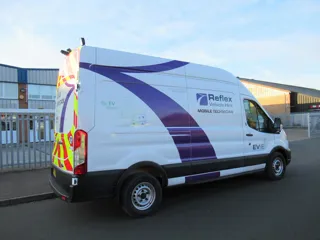By Barney Goffer, UK product manager at Teletrac Navman UK
More consumers than ever expect brands to address climate change in a meaningful way.
For companies in transportation, logistics and other industries that utilise fleet vehicles, one way to fulfil this consumer mandate is through a reduction in carbon footprint – a major focus for the transport and logistics sector as one of the biggest contributors to emissions worldwide.
Today, as much as 20% of all carbon dioxide emissions are the result of burning fossil fuels. However, given that fleets play a vital role in economic growth, any solution needs to consider the major impact the sector has.
Reducing a carbon footprint therefore requires a delicate balance between lower emissions, transportation costs and additional factors that affect everyone.
One method fleet operators are using to reduce their carbon footprint is through software that uses smart algorithms to analyse trip data and identify which vehicles in their fleet are suitable to transition to EV – even showing the total cost of ownership comparisons to help make the business case.
In fact, 30% of fleet operations planning to accelerate their transition to electric fleets over the next year according to our recent TS23 Global Telematics Survey.
While this is an excellent solution for many companies, a comprehensive transition can also take time to complete, so there are many steps that can be taken sooner to reduce a carbon footprint, including with the help of fleet management software.
These proactive measures are not only good for the environment, but also for a company’s bottom line.
1. Decreasing Idling
An idling vehicle is an inefficient vehicle. Heavy-duty diesel engines such as those in long-haul trucks put off a significant number of pollutants while idling. In addition to increased emissions, idling also wastes fuel and increases vehicle wear-and-tear.
With fleet management software, operations managers can track engine idle time more efficiently. This data can be used to create and enforce anti-idle policies within a fleet, leading to an overall reduction in fleet vehicle emissions.
Potentially, even more impactful are reduced fuel costs as a result of decreased idling.
HGV’s can burn nearly two litres of fuel per hour. By reducing idling, these cost savings can be better spent maintaining the fleet, driving growth initiatives, or making capital investments.
2. More Efficient Travel
Poor route planning results in lost productivity, increased fuel spend and underutilised assets. In terms of carbon footprint, the extra travel results in greater emissions on longer routes and the potential for increased idling as employees wait for additional assignments.
With better vehicle tracking systems and real-time route planning, dispatch teams with large fleets can assign jobs more effectively, eliminating downtime between jobs.
Additionally, with greater insights into route options, fleet managers can better plan routes to avoid delays that increase emissions and time on the road.
3. Better Vehicle Performance
Properly maintained fleet vehicles are more efficient than those that do not receive regular maintenance.
Due to their heavy daily use, poorly maintained fleet vehicles are more likely to experience mechanical issues that can result in increased emissions, such as fuel injection problems, sensor issues or faulty exhaust systems.
With fleet management software and pre-trip checklists, your team can spot issues with a fleet vehicle early, preventing faulty vehicles from being in service for prolonged periods.
Additionally, regular maintenance schedules offer their own cost-saving benefits. By addressing small issues early, the risk of larger mechanical problems is reduced.
Fleet management software can have a positive impact on reducing your company’s carbon footprint.
By putting actionable data at your decision makers’ fingertips, you can potentially reduce your fleet’s impact on climate change and increase your profit margins.























Login to comment
Comments
No comments have been made yet.